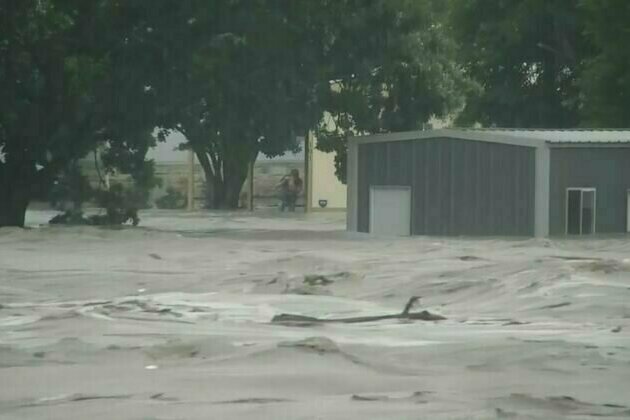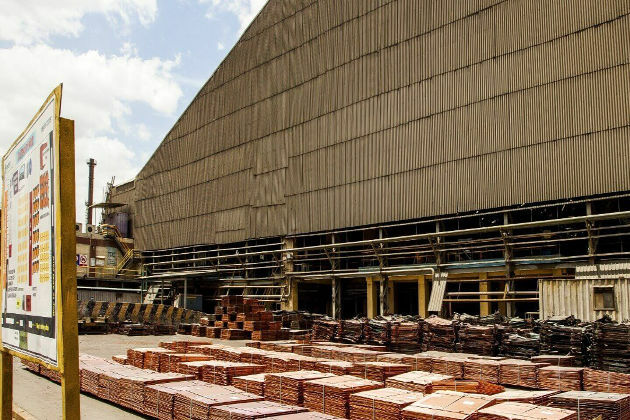The anatomy of a flash flood: Why the Texas flood was so deadly
The Conversation
14 Jul 2025, 16:59 GMT+10

Between July 3 and 6, Texas Hill Country experienced catastrophic flash flooding along the Guadalupe River system. The floods claimed at least 130 lives, with over 96 fatalities in Kerr County alone. More than 160 people were missing as of July 12, including children attending camps along the river.
Preliminary economic losses are estimated at US$18-22 billion, reflecting both residential and infrastructure damages.
Understanding the anatomy of this flash flood, and unravelling the complex interplay of meteorological, geomorphological and hydrological forces, forms the foundation for a comprehensive assessment of what happened. This information is vital to help prevent future similar tragedies from occurring.
Read more: What is a flash flood? A civil engineer explains
The July 2025 flood event in central Texas was triggered by a rare and potent meteorological configuration.
Atmospheric anomalies are weather conditions that differ from what's expected. Analysis of the July 2025 atmospheric anomalies reveals exceptional thermodynamic conditions that directly contributed to the flood's severity.
The total precipitation over the core impact zone in the Hill Country during July 3 to 6 is estimated to have delivered more than 15 billion cubic metres of water - an extraordinary volume.
This deluge was supported by persistent temperature anomalies ranging from 5.4 to 6.9 degrees Celsius above the mean. Such elevated temperatures increased the atmosphere's capacity to retain moisture.
At these anomaly levels, the air mass could store 35 to 50 per cent more water vapour than normal.
Simultaneously, specific humidity anomalies reflected a 60 to 70 per cent increase over July baselines for central Texas. Specific humidity, which quantifies the actual mass of water vapour per kilogram of air, provides a more direct metric of latent moisture available for precipitation.
The convergence of these extreme thermodynamic variables created an ideal environment for deep, moisture-laden convection, supporting prolonged intense rainfall.
While meteorological extremes initiated the July 2025 flood event, the morphology of the Guadalupe River - its shape, behaviour and flows - was pivotal in transforming heavy rainfall into a catastrophic flash flood.
The upper basin's physical geography, drainage configuration and valley structure contributed to the rapid concentration and propagation of floodwaters.
Known as "Flash Flood Alley," the terrain of the upper Guadalupe River basin amplified the July 2025 flood through a combination of steep slopes, shallow soils and karstic geology.
These steep slopes limited infiltration and led to rapid soil saturation under intense rainfall. The predominance of karstic limestone - limestone that has been shaped by water creating plains and sinkholes - further reduced storage below the surface, resulting in minimal delay between rainfall and discharge.
Additionally, narrow valley sections created hydraulic bottlenecks, accelerating flow and increasing flood depth, particularly affecting residential areas and campsites.
In contrast, broader valleys allowed for the water to spread laterally; there was still destructive momentum due to upstream forcing. These geomorphic traits, compounded by the extreme atmospheric moisture, created an environment where floodwaters accumulated rapidly and struck with devastating force, especially along confluence zones and densely occupied riverfronts.
Prior to the July 2025 event, central Texas had already experienced elevated soil moisture conditions due to above-average rainfall during June and early July. Antecedent moisture indices that measure how wet the ground is before rainfall approached 90 to 100 per cent saturation, meaning that the ground was effectively primed for rapid runoff generation.
The region's karst terrain - characterized by shallow, rocky soils - offered less than five per cent effective porosity, severely limiting absorption into the ground. Simultaneously, regional groundwater tables had risen underground, further reducing the ground's capacity to absorb water.
This set the stage for an outsized response to the incoming deluge. When intense rainfall arrived, the ground was quickly and completely saturated, resulting in immediate and rapid surface runoff.
The time of concentration is how long it takes rainwater from the farthest part of a watershed to reach its outlet, like a river or stream. In central Texas Hill Country (known for its steep slopes and rocky, shallow soils), that time is just one to two hours. This means that heavy rain can lead to dangerous river rises very quickly.
Water flows fast down the slopes and through underground limestone channels, leaving little time for it to soak into the ground. As a result, rivers such as the Guadalupe can swell rapidly, rising several feet in a short time, which causes fast-moving flood impacts in narrow valleys and low-lying communities.
The July floods in Texas were devastatingly deadly. A confluence of various meteorological and topographical factors were to blame.
An overheated atmosphere, saturated with water vapour, unleashed record-breaking rainfall. The unique terrain of Texas Hill Country funnelled that rain swiftly into the river system, while the region's hydrology, already primed by previous storms, converted nearly all of it into runoff.
By understanding how these atmospheric, geographic and hydrological elements combined, we can better anticipate future risks in "Flash Flood Alley" and improve early warning systems to save lives.
 Share
Share
 Tweet
Tweet
 Share
Share
 Flip
Flip
 Email
Email
Watch latest videos
Subscribe and Follow
Get a daily dose of Austin Globe news through our daily email, its complimentary and keeps you fully up to date with world and business news as well.
News RELEASES
Publish news of your business, community or sports group, personnel appointments, major event and more by submitting a news release to Austin Globe.
More InformationBusiness
SectionBitcoin soars to a record on Trump policies, institutional demand
NEW YORK CITY, New York: Bitcoin surged to a new all-time high this week, buoyed by growing institutional interest and a wave of pro-crypto...
Huawei eyes new buyers for AI chips amid U.S. export curbs
SHENZHEN, China: As global chip competition intensifies, Huawei Technologies is exploring new markets in the Middle East and Southeast...
U.S. food prices at risk as Brazil tariff hits key imports
LONDON/NEW YORK CITY: American grocery bills may be headed higher as coffee and orange juice prices face upward pressure from new tariffs...
WK Kellogg sold to Ferrero as food giants chase shelf power
BATTLE CREEK, Michigan: In a major consolidation of iconic food brands, WK Kellogg has agreed to be acquired by the owner of Ferrero...
Filmmaker joins biotech effort to bring back extinct giant bird
WASHINGTON, D.C.: Filmmaker Peter Jackson's lifelong fascination with the extinct giant New Zealand flightless bird called the moa...
India seeks WTO nod for retaliatory tariffs on US
NEW DELHI, India: India has submitted a revised proposal to the World Trade Organization (WTO) in Geneva to implement retaliatory tariffs...
Texas
SectionCDC: US records 1,288 measles cases, most since 1992 outbreak
ATLANTA, Georgia: The United States is facing its worst measles outbreak in more than three decades, with 1,288 confirmed cases so...
Royals place RHP Michael Lorenzen (oblique) on IL
(Photo credit: Rick Scuteri-Imagn Images) The Kansas City Royals placed right-hander Michael Lorenzen on the 15-day injured list...
Report: Louisiana Tech leaving CUSA for Sun Belt
(Photo credit: Nelson Chenault-Imagn Images) Louisiana Tech is leaving Conference USA to become the 14th member of the Sun Belt Conference,...
US: Ganapathy Sachchidananda Swamiji leads global Bhagavad Gita festival in Dallas with 10,000 participants
Texas [US], July 14 (ANI): A grand global celebration of the Bhagavad Gita concluded at Allen Stadium in Frisco, Dallas, under the...
The anatomy of a flash flood: Why the Texas flood was so deadly
Between July 3 and 6, Texas Hill Country experienced catastrophic flash flooding along the Guadalupe River system. The floods claimed...
MI New York edgepast Washington Freedom by five runs to secure MLC 2025 title
Dallas [US], July 14 (ANI): MI New York staged one of the most amazing comebacks in franchise T20 history, defeating reigning champions...












